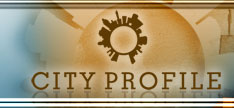Managed by the University of Minnesota, the Bell Museum of Natural History is a museum that collects and preserves numerous animal specimens from all over the world. The museum was established by state legislative mandate in 1872 and from then on has been doing and supporting researches about Minnesota?s natural surroundings.
Through memberships and donations, the Bell Museum continues to grow and to date has gathered and preserved various species of amphibian, reptile, bird, Fish, Fungi, Lichen, Insect, Invertebrate, Mammal,
and Vascular Plant. Most of these specimens are being studied to provide better understanding of their nature.
The amphibian and reptile collections has about 15,000 specimens including a comprehensive series of leopard frogs and its materials collected by David Merrell in the 1960s, which are still being studied by those who are interested in the history of frog aberrations in the upper Midwest. There are also collections representing 40 families, 152 genera and 360 remarkable species of amphibians and reptiles. Another collection the museum has is an array of bird genus. There are approximately 46,000 recorded samples of bird in the museum, mostly from Minnesota while about 12,000 varieties are from Mexico.
The museum?s fish collection dates back to the 19th century and consists of 45,000 documented assortments. The list includes those found in Minnesota, outside the state like Hawaii and outside the country including the Philippines, the Pacific Northwest, Gulf of Mexico and Atlantic coast. The museum also collects fungi species which started from the 1880s and now has roughly 100,000 specimens, of which 10% are Minnesota fungi while the rest are from different parts of the world. Over the years, different studies have been conducted starting from Minnesota fungi done between 1885 and 1910. From 1910 to 1960, plant disease fungi were the focus of the museum and interest in documenting fleshy fungi began in the 1960s. However, to date, the diversity and the distribution of Minnesota fleshy fungi are still yet to be discerned.
Another attraction in Bell Museum is the extensive lichen herbarium which goes back to the latter years of the 1800s and holds an estimated 156,000 specimens. Through the contribution of many experts over the past years, this lichen collection rose to the rank as one of the biggest lichen herbaria in the United States and is one of the rare fully digitalized herbaria in the entire planet. Another extensive collection Bell Museum boasts is its Insect Collection which was established in 1870. From its relatively small beginnings of 3,000 specimens 130 years ago, it has ballooned to a primary national and international collection with close to 3.6 million specimens making it the 8th largest university-connected insect collection in the whole of North America.
| Bell Museum of Natural History Videos |  Add Video Add Video |
| |



